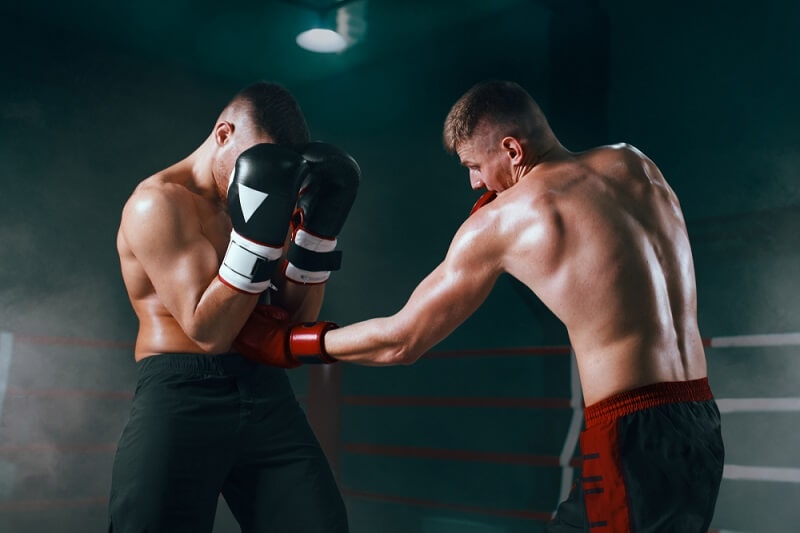
Close
Body punching in boxing is both an art and a science, often underutilized yet incredibly effective. While headshots might grab the spotlight, a well-placed body punch can be a game-changer, crippling opponents and strategically draining their energy. From the devastating hooks to the precise uppercuts, mastering the technique and understanding the impact of each punch is crucial. This comprehensive guide delves into the intricacies of body punching, offering insights and techniques to become a formidable boxer.
Boxing is not just about the flashy knockouts and headshots that make highlight reels. It's a strategic sport at its core, and body punching plays a pivotal role in this strategy. The effectiveness of body punches lies in their ability to deliver crippling blows, strategically drain an opponent's energy, and set up other punches, validating the old boxing adage, Go to the body, and the head will fall.
A well-placed body punch can be more debilitating than a punch to the head. The body, especially the midsection, houses vital organs, and a powerful punch can cause immediate pain and discomfort. For instance, a solid hit to the liver can incapacitate even the most seasoned fighters. The pain from such a punch is often described as paralyzing, with fighters sometimes unable to continue even if they wish to. This is because the body doesn't have the same natural defenses as the head, making it more susceptible to such blows.
Body punches are also strategic tools for draining an opponent's energy. Consistent body shots can wear down an opponent over time, making them slower and less responsive. As the body absorbs these punches, it becomes harder for the fighter to maintain their stamina and pace. This fatigue then opens up opportunities for more significant strikes and combinations, giving the attacker a clear advantage as the fight progresses.
This old boxing saying underscores the importance of body punches. A boxer can force their opponent to lower their guard by focusing on the body, making the head an easier target. As the opponent becomes more wary of body punches, they might start to anticipate and attempt to parry punches aimed at the body. This can lead to openings for headshots. Essentially, body punches can be used as a diversion to set up more damaging blows to the head, especially when the opponent is focused on trying to parry them.

Body punching is an essential aspect of boxing strategy. Its effectiveness lies not just in the immediate damage it can cause but also in how it sets up other opportunities in a fight. Mastering the art of body punching can give a boxer a significant edge in the ring.
Body punching, when executed correctly, can be a game-changer in the boxing ring. However, the effectiveness of these punches depends on the technique, strategy, and understanding of their impact. Here are some essential tips to enhance the effectiveness of body punching.
One of the cardinal sins in boxing is telegraphing punches. When a boxer makes it obvious they're about to throw a particular punch, it gives the opponent a split-second advantage to defend or counter. For body punches, this can be especially detrimental as it allows the opponent to brace for impact or move out of range. The key is to maintain a neutral stance and use feints effectively, keeping the opponent guessing.
While power is crucial, speed is often the determining factor in landing a successful body punch. A fast punch can catch an opponent off guard, making it harder to defend. Combining speed with power ensures that the punch not only lands but also inflicts maximum damage. Training routines that focus on quick bursts of power can help improve the speed and force behind body punches.
Overcommitting to a punch can leave a boxer vulnerable to counters. When targeting the body, it's essential to remain balanced and not lean in too much. If the punch misses or is blocked, the boxer should be in a position to quickly defend or throw another punch. Maintaining a solid base and not overextending ensures safety while delivering body shots.
Predictability is a boxer's enemy. Varying the types of body punchesjabs, hooks, uppercutskeeps the opponent on their toes. Additionally, changing the rhythm and pattern of punches can disrupt an opponent's defense, creating openings for effective body shots.
Unlike headshots, which can have an immediate knockout effect, body punches often result in lingering pain. A well-placed liver shot might not drop an opponent instantly, but the pain intensifies over seconds, making it hard for them to continue. Understanding this delayed reaction is one of the essential boxing sparring tips, as it can help boxers time their subsequent punches for maximum effect.
While headshots aim for a knockout, body shots focus on wearing down an opponent. A solid body punch can break an opponent's rhythm, drain their energy, and even damage internal organs. Over time, consistent body shots can reduce an opponent's mobility and defense, making them an easier target.
Precision is as crucial as power. Knowing where to land a punch on the body whether it's the liver, solar plexus, or ribscan amplify its effectiveness. Training should focus on accuracy, ensuring that each punch lands at the intended spot with maximum force.
A solid foundation in body punching techniques is just the beginning. Continuous practice, sparring, and feedback are essential for refining these skills. As a boxer becomes more adept at body punching, they can integrate advanced strategies, combinations, and feints to become a true 'body snatcher' in the ring.
You may also like: Master Boxing's Knockout Punch: Rule the Ring Secrets
In the boxing realm, mastering body punching is paramount. It's not just about power but technique, strategy, and understanding its profound impact. By honing these skills and integrating the provided tips, boxers can elevate their game, ensuring they're not just fighters, but strategic artists in the ring.
This content was created by AI